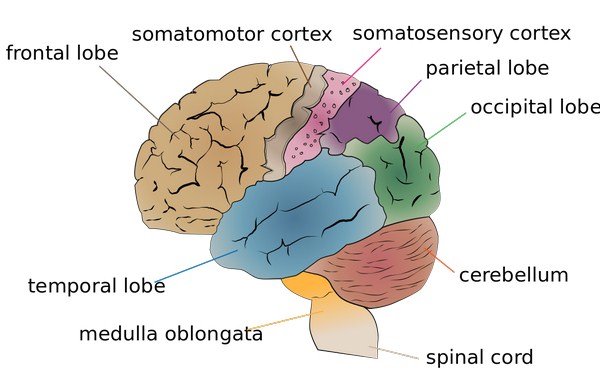
These receptors located in skin and subcutaneous tissue are subdivided into two groups:
- Nonencapsulated.
- Encapsulated.
These receptors do not present any specialized structures made up of modified cells of the tissue. These are free endings of sensory nerve fibers in different forms which directly come in contact with tissue-cell or intercellular spaces.
Types of nonencapsulated receptors:
- Free nerve endings: These nerve fibers may be myelinated or nonmyelinated. But finally ends of the fibers loose myelin sheath. Apart from theskin, these receptors are also located in cornea, periosteum of bone and root of teeth. In skin, these free nerve endings come in contact with basal cells of epidermis or with collagen fibers of dermis. Mostly, they carry pain sensation. But they may be stimulated by touch, pressure as well as temperature.
- Hair follicle receptors: These are also free nerve endings, but in different forms. Terminal unmyelinated ends of nerve fibers form a spiral arrangement around the root of hair follicles below the position of sebaceous gland.
These receptors are stimulated initially when the hair is bent. But so long hair remains bent, the receptors remain silent. When hair is released, a second burst of stimulation occurs. - Merkel disks: These are also called ‘Tactile Disks of Merkel’. In this cases free nerve endings present small disk-shaped endings which come in contact with specialized dark cells in the basal or deeper part of epidermis of skin. These cells are called Merkel cells. These receptors are located in nonhairy skin. Stimulation of these receptors makes a person aware of degree of pressure exerted while touching an object.
These receptors present outer connective tissue capsule surrounding a central core inside which lies the free nerve ending. They are found in different size and shape.
- Meissner’s corpuscles: These are the receptors for touch and that is why called Tactile Corpuscles of Meissner. They are present in dermal papillae of skin and are mostly found in the skin of those parts of body which are very sensitive to touch,for example palm of hand, sole of foot, external genitalia, nipple and eyelids. Meissner’s corpuscles are oval in shape and present a capsule surrounding a central core made up of modified Schwann cells. At the center of the corpuscle schwann cells are intermingled with free nerve endings.
These receptors gives a special tactile power to the skin. Because of their function, a person is able to feel two points of skin touched close to each other. This is called power of two point discrimination. - Pacinian corpuscles: Pacinian corpuscles are largest in size, widely distributed in the body, oval in shape being about 2mm in measurement. They lie in dermis of skin and subcutaneous tissue, being most abundant in palm, sole, breast. Apart from the skin, these are also found in the structures related to joints, e.g. capsules, ligaments, synovial membrane. Firm pressure stimulates these receptors. The oval corpuscles are 2mm in length and 0.5mm in diameter. Structurally it is made up of:
- Outermost capsule.
- Inside the capsule, the central core is formed by concentric layers of flattened cells.
- large myelinated sensory nerve fiber pierces one pole of the corpuscle, looses its myelin sheath. The naked nerve fiber traverses the center of central core of flattened cells and end in a small swollen terminal. Though pacinian corpuscle is known as pressure receptor, it is also sensitive to vibration.
- End bulbs: These are so called because they are bulbous and, spherical or fusiform in appearance at the end of nerve terminal. They are of following types:
- End Bulb of Ruffini: They are fusiform in outline and present in the dermis of skin. Capsule ofthese receptors is cellular in nature and central core is made up of fine collagen fibers. Each corpuscle presents multiple large unmyelinated nerve fibers ending within the center of collagen fibers. They are stretch receptors and stimulated when skin is stretched.
- End Bulb of Krause: These are spherical in outline. The capsule is made up of cells as well as fibers. The nerve fiber, after piercing the capsule, presents a club-shaped appearance at the central core of the bulb. Though these end organs are enlisted here, these are not universally accepted as receptors. These are considered by many as degenerating or regenerating nerve terminal rather than a receptor.
Source: P. McKee, J. Calonje – McKee’s Pathology of the Skin (Elsevier)